Have you ever just sat back while waiting for a nibble on your line and pondered the history and progression of fishing through the ages? As an enthusiastic angler, I can’t help but feel a sense of awe when I think about how our ancestors must have fished and how it has shaped the techniques we use today.
This blog is like pulling up a treasure from the depths – an exploration into the storied past of fishing, tracing its path from prehistoric methods to present-day advancements in this beloved hobby.
Are you pumped for an exhilarating trip down memory lane? Alright then, let’s cast off!
Key Takeaways
- Prehistoric fishing techniques included hand – gathering, spearfishing, and netting.
- Gillnets and the cod trade played significant roles in early history of fishing.
- Modern trawling, early modern designs, and modern fishing trawlers have influenced the evolution of fishing techniques.
- Recreational fishing has a long history and has benefited from technological improvements.
Prehistoric Fishing Techniques
Prehistoric fishing techniques involved hand-gathering, spearfishing, and netting.
Hand-gathering
Long ago, hand-gathering was a common way to get food from the sea. Early humans used their hands to pick up shellfish and kelp on the beach. They dug in the sand for clams and crabs too.
This method of fishing worked well with others like spearing and netting. It gave people many types of fish and seafood to eat.
Spearfishing
Spearfishing is an old way of catching fish. People have used it all over the world for a long time. It started with using sharp sticks as spears to hunt fish in water. Sharpened sticks were common tools used by early humans in ancient times.
Later, spearfishing became a favorite sport for many people who want to hunt underwater during the 1930s. It was not just about food anymore but also fun and sport. Today, we use long sharp tools like spears or harpoons when we go spearfishing.
This sport is still popular today among fishing lovers around the world.
Netting
Netting is a key part of fishing history. People used it in ancient times. The Anishinaabe people caught fish this way. They found it good for catching whitefish deep in Lake Superior.
Nets were often made with wide meshes and thin threads. This was a common, traditional technique. Sometimes, they even used gill nets to tangle up the fish!
Early History of Fishing
Early history of fishing saw the use of gillnets and the emergence of cod trade as significant fishing techniques.
Gillnet
Gillnets have been used in fishing for a very long time, even since ancient times. They were used by Aboriginal fishermen in North America and by Welsh and English fishermen for salmon fishing.
Gillnets are usually made of nylon, either monofilament or multifilament. They have played a big role in the history and development of fishing techniques.
Cod Trade
During the Viking period and even earlier, the trade in cod began. It played a significant role in the development of the fishing industry. The Seventeenth-Century English cod fisheries were particularly influential, as they helped fuel growth by providing fish to feed mariners and soldiers.
The French fishing industry also had ties to the trade in fish. If you’re interested in learning more about the history of fishing, exploring topics like the English cod trade and Iceland’s fishing industry can provide fascinating insights into this ancient practice.
Evolution of Fishing Techniques
Modern trawling, early modern designs, and the modern fishing trawler have all contributed to the evolution of fishing techniques throughout history.
Modern Trawling
Modern trawling has been an important development in the fishing industry. It started in the 18th century and involves using a net, called a trawl, to catch fish and other sea creatures by dragging it along the seabed.
This method is commonly used in deep-sea fisheries where species like longevity, low reproduction rates, and vulnerability can be targeted. While some modern bottom trawls have been designed to minimize environmental impact, trawling itself remains controversial due to concerns about overfishing and habitat destruction.
The evolution of fishing techniques like modern trawling has contributed to the growth of the industry but also presents challenges for ensuring sustainable fish populations and marine ecosystem conservation.
Early Modern Designs
Early modern designs played a big role in changing fishing techniques. In the 18th century, new methods like trawling and longlining started to be used. These techniques helped commercial fishing grow and become more successful.
Traditional fishing methods have been around for thousands of years, but with these modern designs, fishing became easier and more productive. Fishing has a long history, with ancient Greeks and Romans even showing it in their art.
So, thanks to early modern designs, fishing got better over time!
Modern Fishing Trawler
A modern fishing trawler is a type of fishing vessel that has evolved over time. It plays an important role in the fishing industry and the evolution of fishing techniques. Trawling is a method where a net, called a trawl, is dragged through the water behind one or more trawlers.
This technique allows fishermen to catch large amounts of fish efficiently. The development of new technologies in fisheries has contributed to sustainable exploitation of fish stocks and ecosystem-based conservation.
The British factory trawler experiment in the late 1940s played a crucial role in rapidly improving vessel designs for commercial fishing. As highlighted by the State of World Fisheries and Aquaculture 2022 report, the fishing industry continues to grow, particularly in aquaculture production.
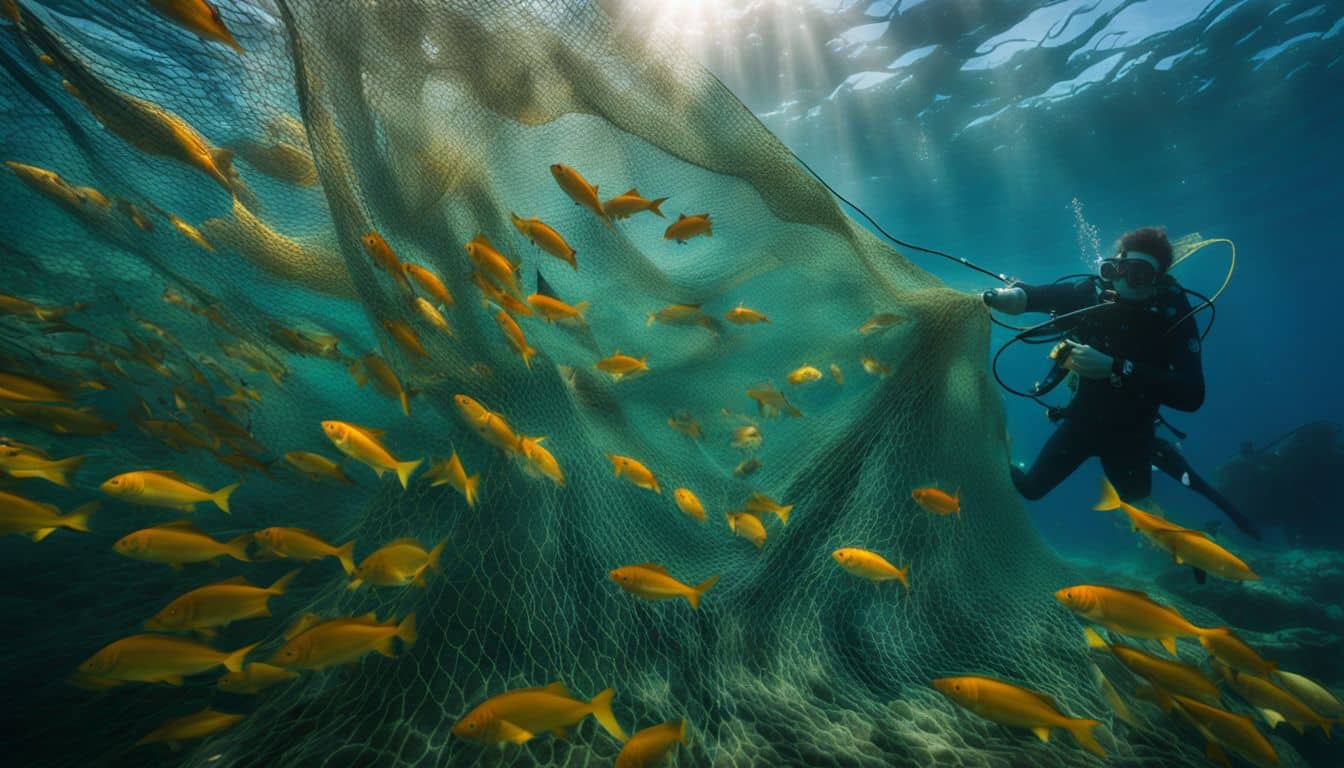
Recreational Fishing
Recreational fishing has a rich history that dates back centuries. From its humble beginnings as a means of survival to becoming one of the most popular pastimes today, recreational fishing has evolved and grown in fascinating ways.
Learn more about its origins, development, technological improvements, and expansion by reading the full blog post.
Origins
Recreational fishing, also known as angling or sport fishing, has a long and interesting history. It all began a few hundred years ago when people started fishing for fun and leisure rather than just for survival.
Initially, it was popular among the upper classes but eventually became enjoyed by people from all walks of life. Fishing has always been practiced since ancient times as a means of providing food and surviving.
As time went on, different types of fishing techniques emerged such as deep-sea fishing in the 15th century and fly fishing as early as the 9th century BCE in Japan. These origins laid the foundation for what recreational fishing is today – an activity that brings relaxation, enjoyment, and connection with nature.
Development
As a fishing enthusiast, it’s fascinating to look at the development of recreational fishing over time. Recreational fishing has become an important part of our culture and economy.
In 2017 alone, it contributed significantly to our economy and supported many jobs. It’s amazing how far we’ve come from the early days of hand-gathering and spearfishing. With advancements in technology, recreational fishing has seen great improvements.
From angling to line fishing and rod fishing, there are now various techniques that enthusiasts can enjoy. The expansion of recreational fishing has also led to new technological innovations that have made the experience even better.
Technological Improvements
Technological improvements have greatly influenced the growth and development of recreational fishing. Throughout history, advancements in fishing gear and marine technology have revolutionized the way we fish.
For example, the development of artificial lures and innovative fishing techniques has made it easier for anglers to attract a wide variety of fish species. The use of sonar technology, which uses sound waves to locate fish underwater, has also become an essential tool for fishermen.
Additionally, improvements in boat design and engine power have allowed anglers to venture further into the open ocean in search of their catch. These technological enhancements have not only made fishing more accessible and enjoyable for enthusiasts but have also played a crucial role in ensuring sustainable practices by improving fish population management and conservation efforts.
Expansion
Recreational fishing has grown tremendously over the years, offering more opportunities for people to enjoy the sport. This expansion of fishing as a hobby has not only provided entertainment and relaxation but also contributed significantly to the economy.
With more people engaging in sports fishing, there is an increased demand for equipment, tackle, and accessories, thereby creating job opportunities in the fishing industry. The growth of recreational fishing has also led to an increased focus on sustainable practices and fishery management.
Understanding its history helps us appreciate the impact that recreational fishing has had on our communities and emphasizes the need for responsible angling practices to preserve fish populations and ensure a healthy stock for future generations.
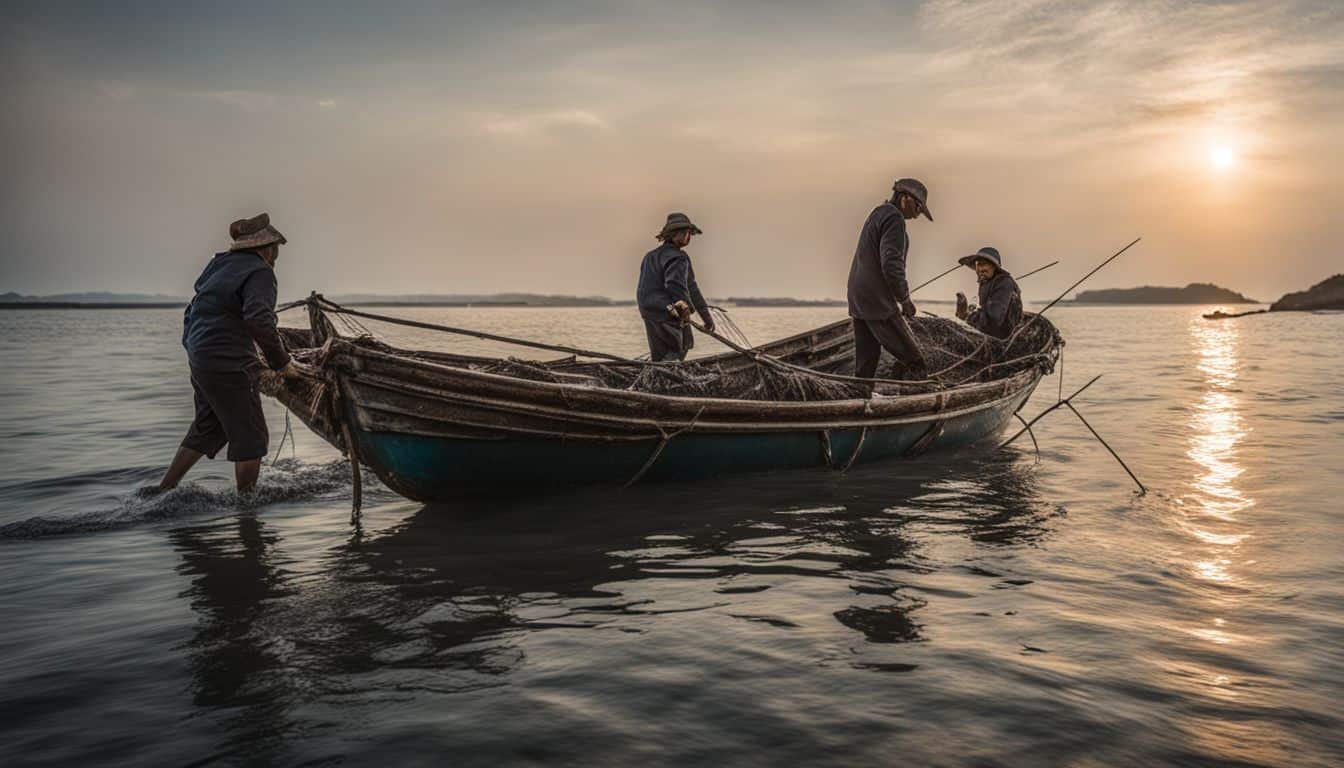
Fishing in Art
Fishing in art has been a fascinating subject for thousands of years. Artists have depicted fishing in various forms, such as paintings, sculptures, and other artistic representations.
This art serves as a visual record of the growth and evolution of fishing techniques, tools, and traditions throughout history.
You can find traces of fishing in art dating back to prehistoric times. Cave paintings in Spain and France show early humans engaging in fishing activities using primitive methods like hand-gathering and spearfishing.
These artwork showcases the importance of fishing in the survival and development of communities.
Throughout history, fishing has continued to be a popular theme among artists from different cultures around the world. Maritime art often features scenes depicting fishermen at work or aquatic life related to fisheries.
These artworks provide us with insights into the rich heritage and significance of the fishing industry.
Angling
Fishermen
Fishery
Aquatic life
Maritime art
Different Fishing Techniques
From angling to trapping, there are a wide variety of fishing techniques that have been used throughout history. Curious to learn more? Dive into the fascinating world of fishing methods and discover new ways to reel in your next big catch!
Angling
Angling is one of the main fishing techniques that people use. It’s a way to catch fish using a rod and a line with a hook at the end. There are different types of angling, like bait fishing, fly-fishing, bait casting, spinning, and trolling.
These methods can be used in both freshwater and saltwater fishing. Angling has been around for a long time and it keeps evolving as people come up with new ideas and techniques. One important thing to remember is that how you handle the fish after you catch it can make a big difference in whether or not it survives when you release it back into the water.
Line Fishing
Line fishing is a popular fishing technique that has been used throughout history. It involves using a line with bait or lures attached to catch fish. Angling, which is a type of line fishing, is commonly practiced in both freshwater and saltwater environments.
Different methods of angling include bait fishing, fly-fishing, bait casting, spinning, and trolling. The use of lines for fishing dates back centuries, with natural materials like horsehair being used to make lines in the past.
Line fishing continues to be an integral part of the fishing industry and remains a favorite among fishermen today.
Rod Fishing
Rod fishing is a popular way to catch trout and salmon. It has been used for centuries and has helped improve fishing tackle and techniques over time. In the 1600s, a wire loop was added to the end of the rod, which made it easier to cast.
Rod fishing is one of the basic methods of angling that can be used in both freshwater and saltwater fishing. It’s not just limited to trout and salmon – you can use it to catch many different species.
Through rod fishing, we have seen advancements in fishing tackle and techniques.that have shaped the history of fishing.
Trapping
Trapping has been used by hunters and gatherers since ancient times. It is a fishing technique that involves using traps, snares, or other methods to capture fish. These traps can be pit traps or three-dimensional devices like pots that make it difficult for organisms to escape once caught.
Trapping is not only used by recreational anglers but also by commercial and artisanal fishermen. In recent years, there has been a decline in traditional fur trapping, leading to the rise of nuisance animal control as a growing industry.
This technique allows fishermen to target specific species or control populations of nuisance animals effectively. So whether you are a hobbyist angler or a professional fisherman, trapping can be an effective method for catching fish!
Destructive Fishing Techniques
Destructive fishing techniques have had a significant impact on marine ecosystems, including blast fishing, bottom trawling, cyanide fishing, and muro-ami.
Blast Fishing
Blast fishing is a destructive technique that poses a serious threat to coral reef ecosystems. It involves using explosives like dynamite to stun or kill fish in the water. This illegal practice causes significant damage to marine habitats, leading to the degradation of coral reefs and other underwater ecosystems.
Blown up coral reefs can destroy up to 70% of live corals in the surrounding area, causing harm to marine biodiversity and disrupting the balance of these delicate environments. It’s important for us as fishing enthusiasts to be aware of this damaging practice and promote sustainable fishing methods that protect our precious marine resources.
Bottom Trawling
Bottom trawling is a really harmful way of fishing that causes a lot of damage to the ocean. It involves using big nets that have weights on them, and these nets are dragged along the seafloor.
This process disturbs the seafloor and can harm fish species that live near the bottom of the ocean. Some of these fish species are long-lived and don’t have many babies, so they’re especially vulnerable to being caught by bottom trawling.
It’s also a problem because it catches other types of sea creatures by accident, not just the ones that fishermen want to catch. Overall, bottom trawling does a lot of harm to our oceans and isn’t good for sustainable fishing practices or protecting biodiversity.
Cyanide Fishing
Cyanide fishing is a harmful and destructive technique used to catch live fish for the aquarium trade. This method involves spraying toxic chemicals into the water, which stuns the fish and makes them easier to capture.
However, cyanide fishing has devastating effects on marine ecosystems. It is illegal in many countries because it damages coral reefs and harms other marine life. The use of cyanide can also lead to poisoning of fish and pose risks to human health.
International organizations are working hard to address this issue and protect our oceans from further damage caused by cyanide fishing.
Muro-ami
I want to talk about a fishing technique called muro-ami. It’s used in Southeast Asia and it’s really destructive. The way it works is by using a net that surrounds the coral reefs, and then they use big stones to scare the fish into the net.
This method damages the coral reefs and disrupts the whole marine ecosystem. In fact, it’s so harmful that in 2011, it was banned in Karimunjawa National Park in Indonesia to protect the marine species and help them recover.
Muro-ami originally came from Japan, where it was effective at catching reef fish but caused a lot of damage to coral reefs.
Fishing Resources and Regulations
Fishing resources and regulations play a crucial role in managing the sustainability of fish populations, ensuring responsible fishing practices, and protecting the marine ecosystem.
Fisheries Management
Fisheries management is important for ensuring the sustainable use of fishing resources. It aims to produce benefits from renewable aquatic resources while protecting ocean and freshwater wildlife.
Sustainable fishing practices are crucial for maintaining the future populations of fish and other species. The Modern Fish Act focuses on improving recreational fishing data and managing mixed-use fisheries.
This act includes requirements for new reports to ensure better management of fishing resources and prevent overfishing. Without proper management intervention, there is a risk of uncontrolled development in fishing activities which can harm the balance of ecosystems.
Licensing
To go fishing legally, it’s important to understand the licensing requirements. Fishing licenses are needed for individuals 16 years and older in Iowa. However, children under 17 are exempted but would still require an adult instructor with a license to accompany them.
Iowa offers a user-friendly online system called Go Outdoors Iowa where you can easily obtain your fishing license. The fees and taxes associated with licensing help fund fishery management and enhancement, ensuring that our fisheries remain healthy and sustainable for future generations of anglers like us.
Species
Understanding the different species you can catch is an integral part of fishing. Here’s a table with some of the most common species and some facts about them!
| Species | Description | Habitat |
|---|---|---|
| Salmon | They are known for their size and strength, making them a favorite among anglers. | Most Salmon species are found in the cold waters of the Northern Hemisphere. |
| Bass | Bass are popular game fish, known for their fight and are treasured for their table fare. | Bass inhabit a variety of water bodies, including rivers, lakes, and ponds. |
| Trout | Trout are highly prized game fish for their fight and taste. | They are usually found in cool, clear streams and lakes. |
| Tuna | Being a fast and high-energy fish, tuna are popular among sport fishers. | Tuna are saltwater fish and are often found in warm seas. |
| Marlin | Marlins are among the fastest fish, but speeds are often wildly exaggerated in popular culture. | They are found in the Atlantic and Pacific oceans. |
Understanding their lifecycles and migration patterns are crucial for proper fisheries management and to support their habitats. This knowledge is often used to establish fishing regulations and prevent overfishing. As a fishing enthusiast, it’s important to stay informed and respectful of these regulations to protect these species and the environment.
Locations
I love exploring different fishing locations because it allows me to discover new species and experience diverse marine ecosystems. From freshwater lakes to deep-sea adventures, there are endless opportunities for fishing enthusiasts like me.
Some popular fishing spots include the Great Lakes in North America, where you can catch a variety of fish such as trout, salmon, and bass. The Florida Keys offer excellent saltwater fishing opportunities with their vibrant coral reefs and abundance of game fish like marlin and tarpon.
In terms of regulations, it’s important to be aware of licensing requirements and specific rules for each location to ensure sustainable fishing practices are followed. By respecting these guidelines, we can help preserve our precious marine resources for future generations to enjoy.
Guides and Trips
Fishing guides are a great resource for fishing enthusiasts like us. They have lots of tips and tricks to help us catch more fish, like showing us the best casting techniques and how to detect when a fish is biting.
Guides also know all about the local fishing spots and can give us an update on what’s been catching recently. They’re experts in fishing regulations too, so they can make sure we’re following all the rules and have the right licenses.
If we want to get involved in recreational or sport fishing conventions, they can guide us there as well. Plus, they know a lot about the history of fishing growth and can share interesting facts about different techniques and practices throughout time.
Conclusion on History Of Fishing
In conclusion, the history of fishing is rich and diverse, with techniques evolving over thousands of years. From prehistoric hand-gathering to modern trawling, fishing has played a crucial role in human culture and sustenance.
Whether for recreation or commercial purposes, fishing continues to thrive as an important industry worldwide. By understanding its past and embracing sustainable practices, we can ensure the future growth and preservation of this ancient tradition.
FAQs on History Of Fishing
1. How can I improve my fishing skills?
You can improve your fishing skills by practicing regularly, studying different techniques, and learning from experienced anglers.
2. What are some important tips for beginners in fishing?
Some important tips for beginners in fishing include choosing the right equipment, learning basic casting techniques, understanding fish behavior and habitats, and being patient.
3. How has the history of fishing contributed to its growth?
The history of fishing has contributed to its growth through advancements in technology, such as better gear and equipment, sustainable practices to protect fish populations, and increased accessibility for recreational anglers.
4. Is it necessary to have a fishing license?
Yes, it is generally necessary to have a fishing license before you can legally fish in most areas. Fishing licenses help regulate and manage fisheries while ensuring conservation efforts are maintained.
5. Can I go fishing without any prior experience or knowledge?
While you can go fishing without prior experience or knowledge, having some basic understanding of techniques and regulations will increase your chances of success and enjoyment during your fishing trip.

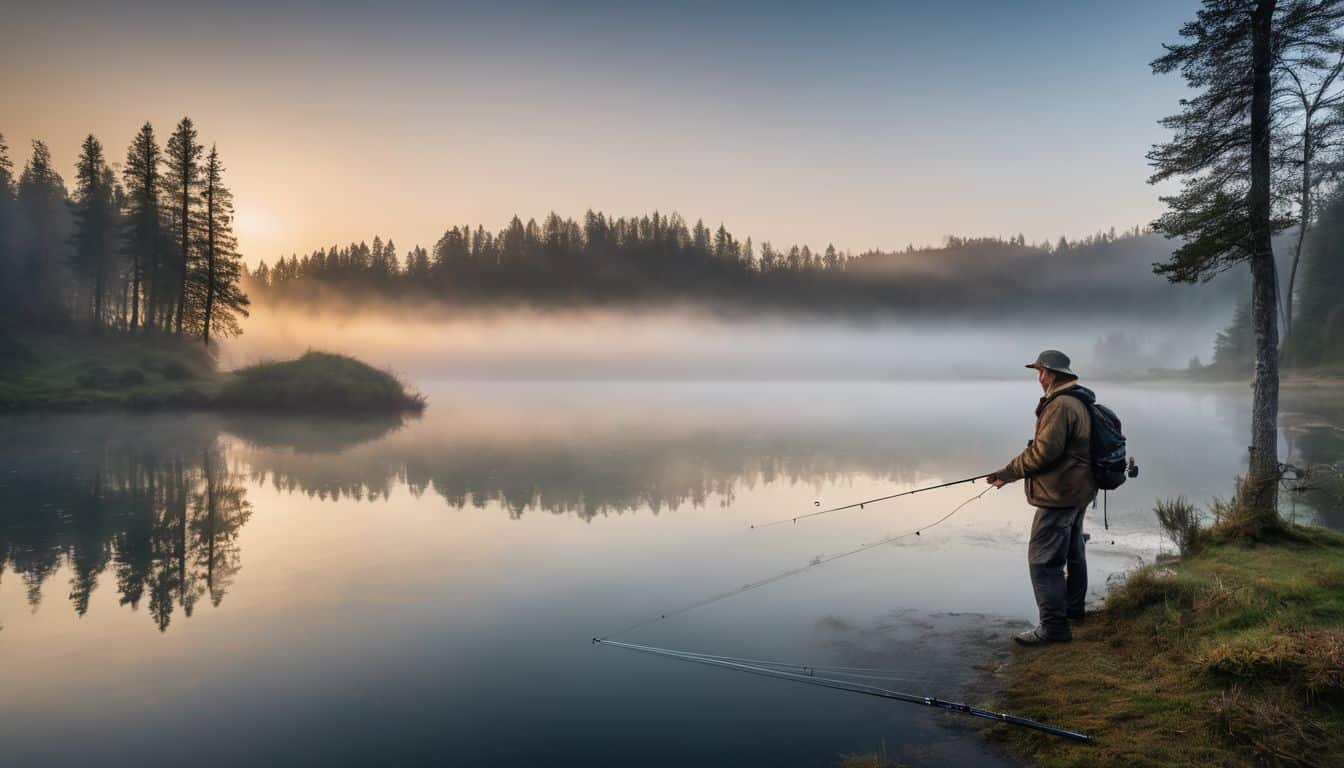
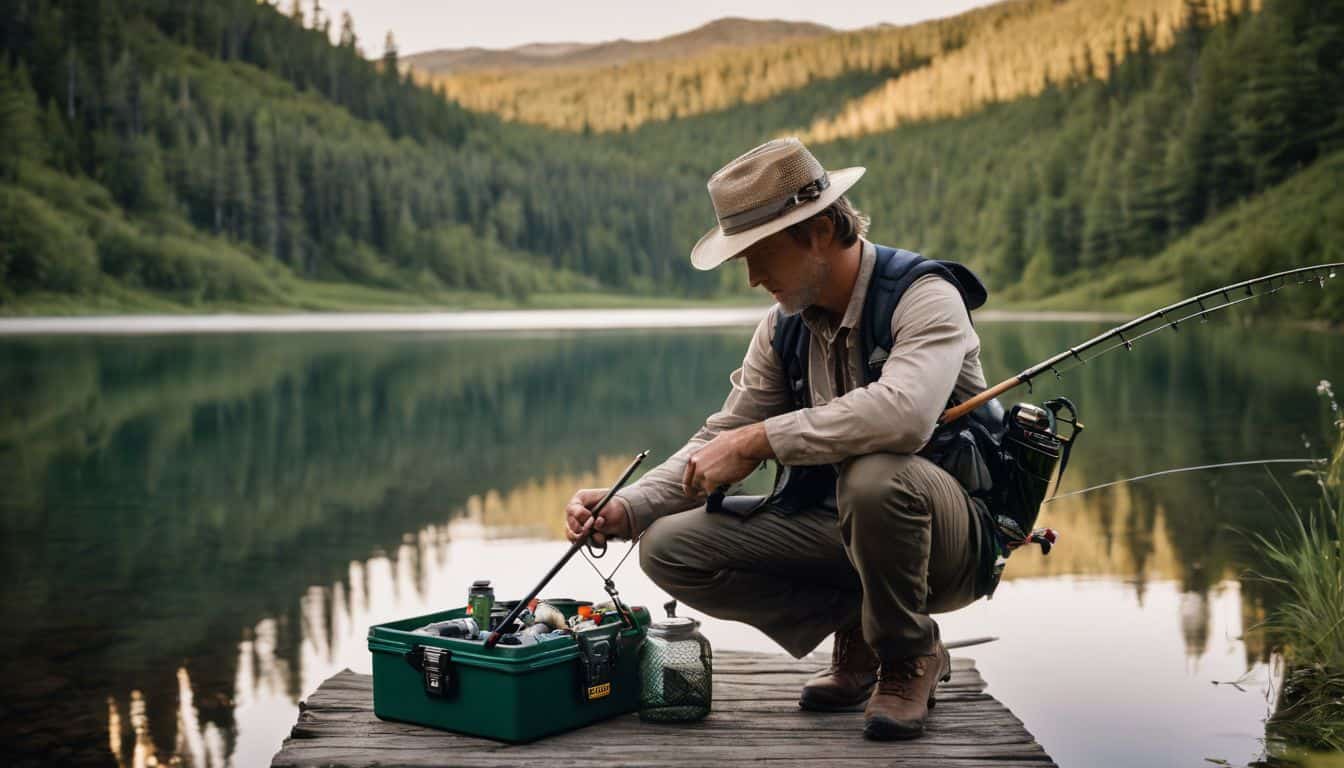
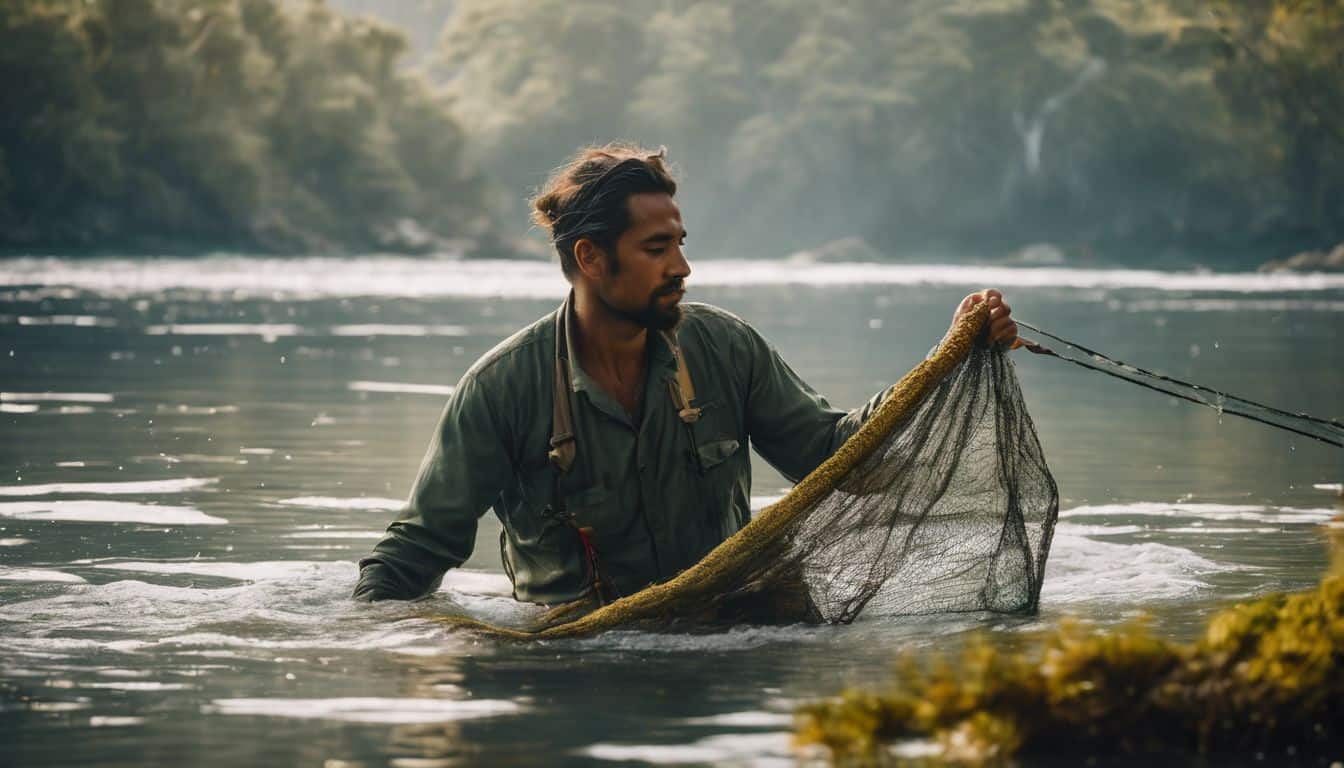
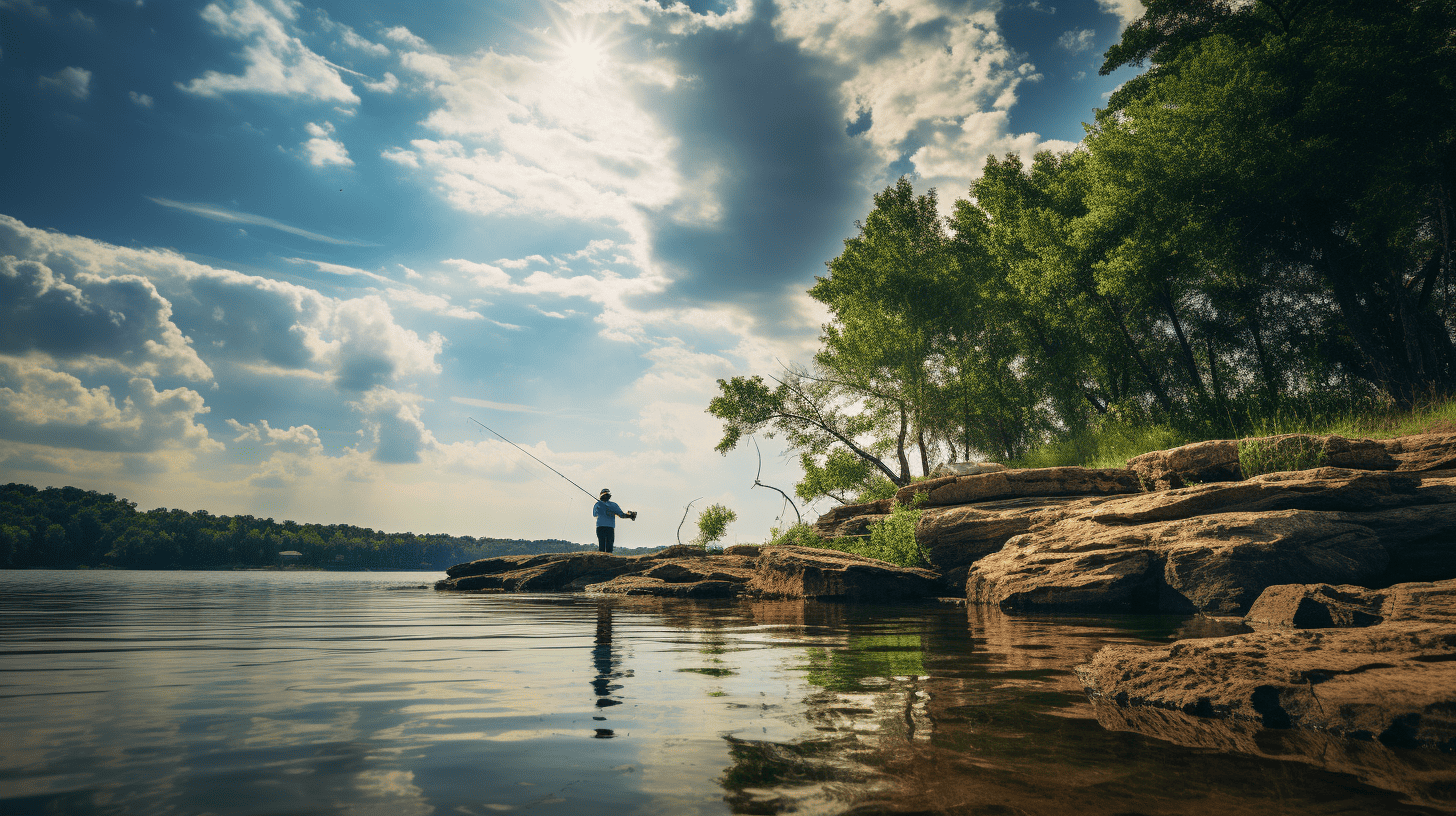
Leave a Reply